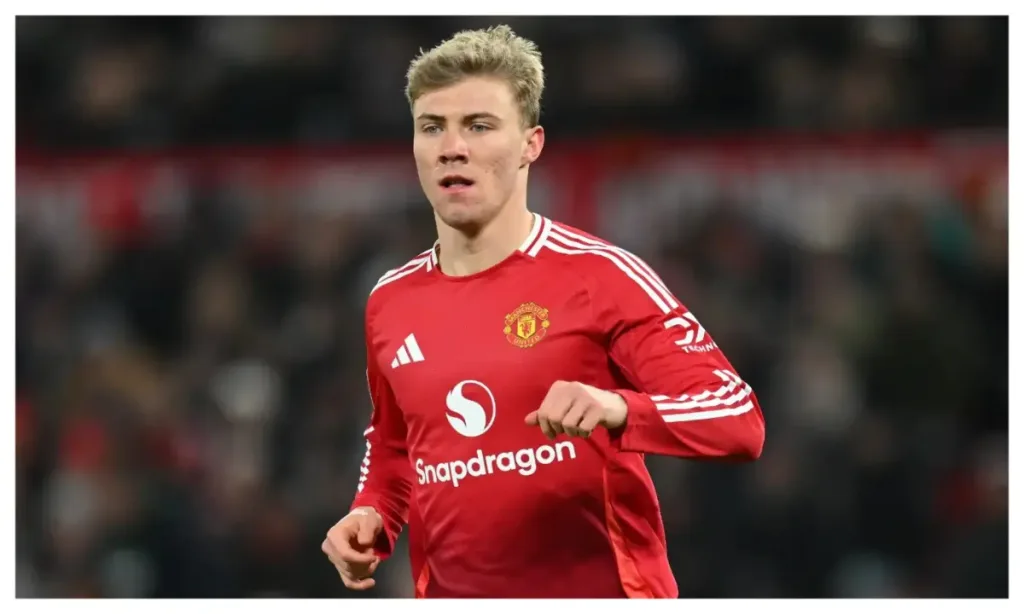Manchester United have placed a £40 million price tag on Danish striker Rasmus Højlund, signaling their intent to offload the 21-year-old during the summer transfer window. Citing an increased valuation from an initial £30 million, the club appears keen to capitalize on growing interest in the forward, with RB Leipzig, Serie A sides, and Saudi Arabian clubs reportedly monitoring the situation. However, sources close to the player confirm Højlund remains determined to prove his worth at Old Trafford despite the mounting speculation about his future.
The revised asking price follows earlier reports that United had considered loaning out the Denmark international, a strategy recently questioned by former club defender Mikaël Silvestre, who publicly advised manager Rúben Amorim against hastily sidelining the young striker. This counsel comes amid United’s pursuit of RB Leipzig’s Benjamin Šeško, a move that could intensify competition for attacking positions. Højlund’s debut season saw flashes of potential, but inconsistent form has fueled debate about his long-term role in the squad, with the club now weighing financial gain against developmental prospects.
Separately, Chelsea’s women’s team has confirmed the departure of 17-year-old midfielder Lola Brown, who will spend the 2024/25 season on loan at Crystal Palace. Brown, who joined Chelsea’s youth setup in 2019 and progressed through their Under-12s and U18s squads, secured her first professional contract last year after being crowned the Women’s Academy U18 Player of the Season. The temporary switch aims to provide the rising talent with regular senior football, a critical step in her development within the competitive Women’s Super League landscape.
Højlund’s situation underscores the balancing act clubs face in managing emerging talent amid financial pressures, while Brown’s loan reflects a strategic approach to nurturing young prospects. Both developments highlight the broader dynamics of modern football, where short-term squad needs and long-term investments continuously shape transfer strategies. As the summer window progresses, decisions made by United and Chelsea will serve as case studies in player valuation and youth development on the global stage.
